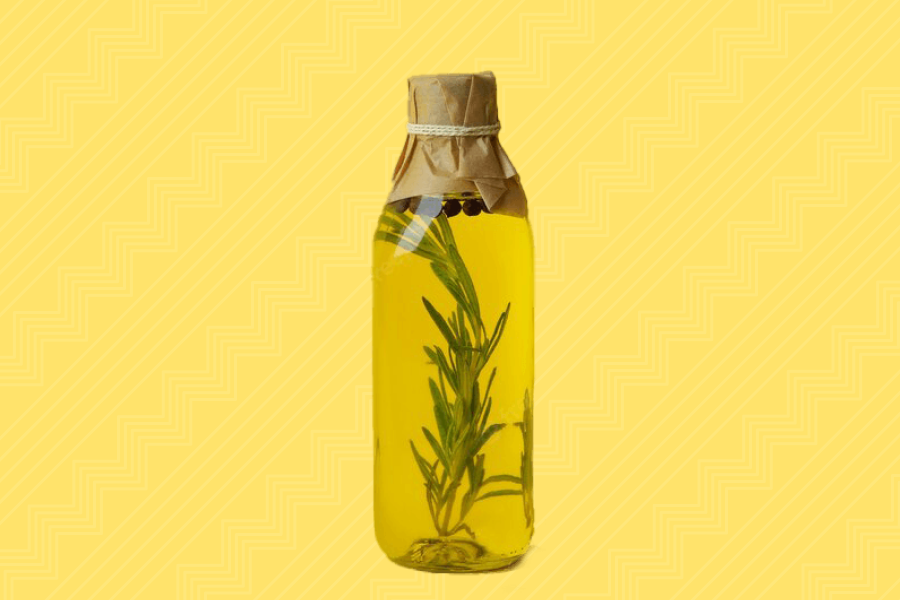There is a whole heap of confusion surrounding oils and whether or not they are good or bad for us. Firstly, there is a huge difference between fats and oils. Oils are extractions, meaning that to get into the bottle on your kitchen worktop they have to be processed into a concentrated form.
This is regardless of whether that oil originates from olives or avocados. When it comes to oil, you are consuming concentrated fat.
Is all fat bad?
Fats, when found in whole foods, are essential to our well-being. So, there are indeed a whole host of healthier fats that we can consume.
These fats in their whole food state supply us with goodness such as omega-3s and monounsaturated fatty acids, beneficial stuff for a whole host of reasons. Thankfully, getting these fats into our diets isn’t all that difficult, provided you know where to find them!
We agree that some oils are better for you than other oils, but the point is that none of them are particularly good for you. This tends to be lost in all of the marketing hype surrounding whatever is making the headlines at present – don’t be drawn in. A pound of sugar is better for you than two pounds, but neither is great. You get the picture.
Here are 4 reasons to minimize or eliminate oil from your whole food plant-based diet:
1. High caloric density
Two-thirds of the U.S. and one-third of the world are either overweight or obese. Avoiding or minimizing oil is the easiest way to cut out hundreds of calories. Oil is 100% pure fat and has 120 calories and 14g of fat per tablespoon, which is about 2,000 calories per cup.
2. Omega-3 to Omega-6 ratio
In our diet, we tend to receive too much Omega-6 and not enough Omega-3. Ideally, the Omega-3 to Omega-6 ratio should be between 1:2 and 1:4. Most vegetable oils contain a lot of Omega-6 and little or no Omega-3. Another strategy to help optimize that ratio for appropriate inflammatory qualities in the body is to reduce or eliminate oil.
3. Rancidity
High-fat foods are very susceptible to oxidation from the environment. Opting out of oil is an easy way to avoid or minimize your exposure to these free radicals. You can’t tell necessarily if the oil has gone rancid by its smell or flavor, so opt out now.
4. Processed food
Oils are technically processed food. Most of those nutrients are stripped away and there is no fiber left. So, if you want to be full and eat less and more nutrient-dense overall, the best thing you can do is cut out the oils from your diet.
How can we reduce oil intake?
As with so many things in life, a lot of it is all about breaking old habits and creating new ones. Let’s take a look at some tips to reduce oil intake on a day-to-day basis:
1. Know the common culprits.
Hydrogenated oils are most commonly found in ultra-processed foods that also have saturated fat, such as:
- margarine
- vegetable shortening
- packaged snacks
- baked foods, especially premade versions
- ready-to-use dough
- fried foods
- coffee creamers, both dairy and nondairy
2. Read food labels carefully.
If you want to find hydrogenated oils, it’s important to read both the food label and the ingredients list. Check for the word “hydrogenated,” for example “hydrogenated soybean oil.”
Because of the risks associated with trans-fat, it’s best to avoid any food product that contains partially hydrogenated oil.
Look for the words “partially hydrogenated” in the ingredients list, for example, “partially hydrogenated vegetable oil.”
3. Use vegetable oils for cooking.
Margarine and shortening are easy to cook with, but they typically contain hydrogenated oils. Opt for heart-healthy vegetable or plant oils, such as safflower, olive, or avocado oil instead.
4. Limit packaged foods.
Partially hydrogenated oils go hand in hand with food preservation, so hydrogenated fat often ends up in packaged foods. Decrease your dependence on packaged foods. Start by eliminating one food group at a time.
5. Makeover your snacks.
Snacks can be an important part of a balanced diet. They can sustain you until the next meal, keep you from being overly hungry, and prevent drops in blood sugar. The problem is that many convenient snacks are made with hydrogenated oil.
Choose more satiating whole-food snacks, such as mixed nuts, carrot sticks, apple slices, bananas, and plain yogurt.
Remember to check the labels of any packaged goods you might eat with these snacks, such as hummus, peanut butter, and flavored yogurt.
6. Get some new pots and pans.
Nonstick pots and pans are the easiest way to lower the amount of oil that you use when cooking. Choosing high-quality cookware may be expensive initially, but its lifespan far exceeds that of the cheaper versions available on the market.
7. Master the art of oil-free stir-frying and sautéing.
Having a small jug of either water or broth by your side when cooking is the key. Simply add a tiny amount – one or two tablespoons – at a time, so that your food will still color but won’t be steamed by the liquid.
Repeat throughout the cooking process whilst continuing to move the food in the pan now and then to prevent burning.
8. Change up your baking with oil-free substitutes.
Contrary to popular belief, baking doesn’t have to involve oils, margarine, and butter. Swapping these fatty things with ingredients such as a fruit purée can dramatically reduce oil intake, making your favorite sweet treats a little healthier and all the more enjoyable.
9. Switch up your salad dressings.
Salad dressings can benefit from a little bit of fruit or nut, too, and can be a great place to start if you want to lower your oil intake. For those dressings that require a sweeter taste, use fruit juice as an oil alternative along with the usual mix of vinegar and spices.
In conclusion, reducing your oil intake needn’t be a bind. It’s more about being prepared and staying mindful than anything else. Making one or two small changes to the way that you cook or choose your food can make a huge difference.

